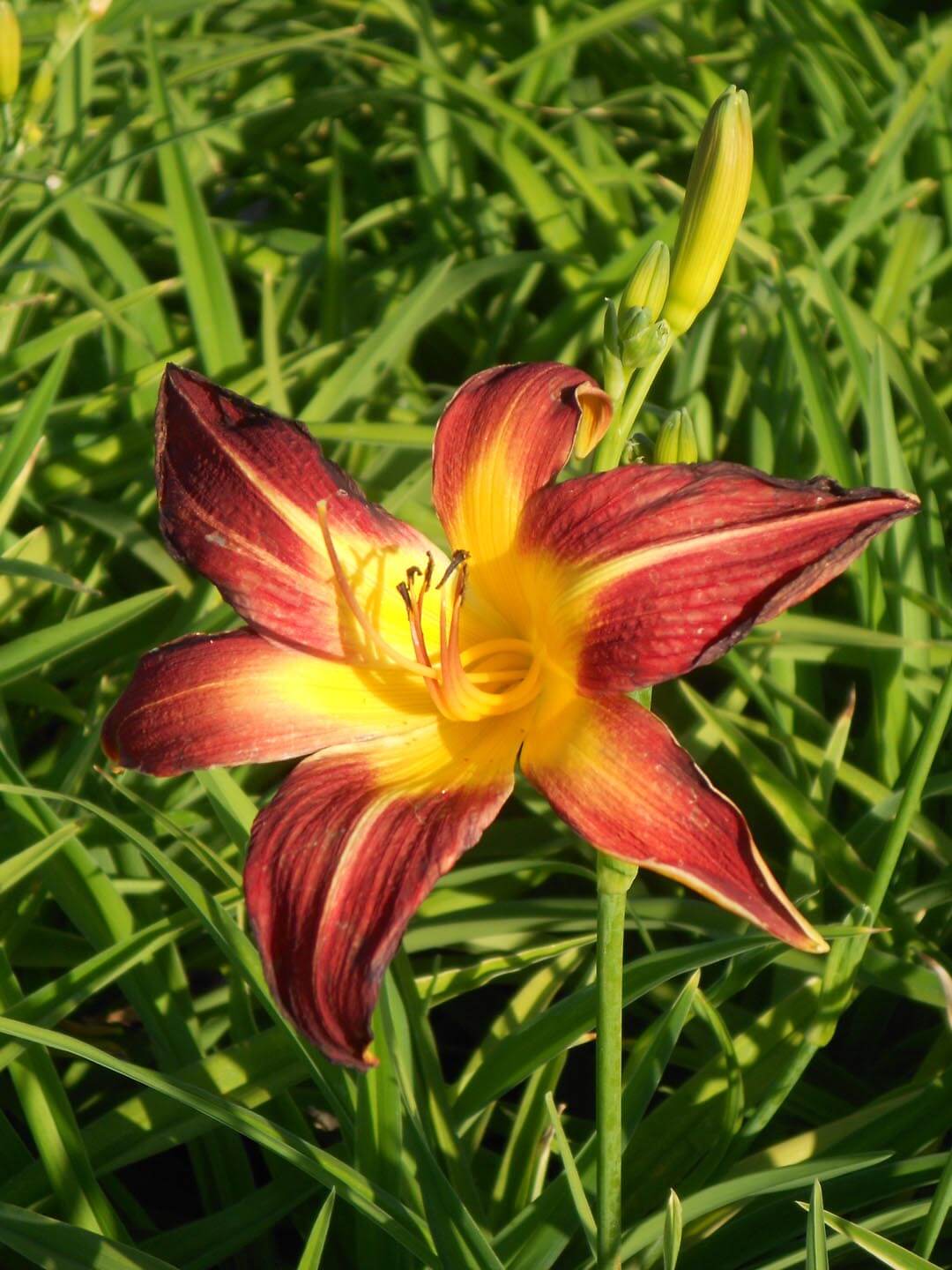Wholesale Division: (818) 316-2000 [email protected]
Retail Division – So Cal Only: (818) 316-2024 [email protected]

Boething Treeland Farms grows over 1,000 varieties of trees, shrubs, perennials and specialty plants on 10 California nurseries to serve the wholesale landscape and nursery industries throughout the Western United States and beyond.
Plant Type: Ground Covers / Perennials
Evergreen-Deciduous: Evergreen
Overall Mature Size: Medium
Mature Height & Spread: 2-4' x 2-4'
Natural Growth Habit: Clumping
Native To: Asia, Japan, Hybrid
Exposure: Full Sun, Partial Shade
Water: Medium Water
Flower Color: Red
Bloom Time: Spring, Summer, Fall
Special Features: Attracts Birds/Butterflies / Cold Hardy / Deer Resistant / Desert Conditions / Drought Resistant / Intermountain Conditions / Seacoast Conditions
Container Sizes: #1, #5
Sunset Garden Zones: 1-24
An edible cultivar, ‘Rosie Meyer’ daylily has large, 5” red blooms with yellow throats. This evergreen selection grows 2-4’ tall and wide, with strap-like foliage. An early-season repeat bloomer, this Daylily produces its first flowers in spring and continues through fall. This particular selection is sometimes used to garnish salads.
Hemerocallis are extremely low-maintenance and adaptable, seemingly unaware that poor soil, sporadic water, severe cold, seacoast or desert conditions might otherwise imperil more fragile plants. Perhaps this accounts for their popularity; they are among the most requested plants Boething Treeland Farms grows. These are low shrubs, at home in manicured and natural gardens alike. Their long sword-shaped bright green leaves grow in a tidy clump and look fabulous on slopes, in borders, with stones or mulch under a tall canopy of trees, near pools and in containers. Tuberous root systems benefit from occasional dividing best done in early spring or fall. While they tolerate abuse, those who wish to optimize performance will make sure that they are mulched (particularly in cold winter climates), planted in well-drained soil, and watered regularly. Partial shade is a good idea in the hottest areas. Native to Eurasia, Sunset Western Garden Book suggests they do well in zones 1-24. Hemerocallis have been hybridized for years resulting in the development of a wild array of colored flowers, wavy petals, and scent in addition to foliage color. On a cultural note, Hemerocallis derives its name from the Greek words for day: “hemera” and beautiful: “kalos”.
An edible cultivar, ‘Rosie Meyer’ daylily has large, 5” red blooms with yellow throats. This evergreen selection grows 2-4’ tall and wide, with strap-like foliage. An early-season repeat bloomer, this Daylily produces its first flowers in spring and continues through fall. This particular selection is sometimes used to garnish salads.
Hemerocallis are extremely low-maintenance and adaptable, seemingly unaware that poor soil, sporadic water, severe cold, seacoast or desert conditions might otherwise imperil more fragile plants. Perhaps this accounts for their popularity; they are among the most requested plants Boething Treeland Farms grows. These are low shrubs, at home in manicured and natural gardens alike. Their long sword-shaped bright green leaves grow in a tidy clump and look fabulous on slopes, in borders, with stones or mulch under a tall canopy of trees, near pools and in containers. Tuberous root systems benefit from occasional dividing best done in early spring or fall. While they tolerate abuse, those who wish to optimize performance will make sure that they are mulched (particularly in cold winter climates), planted in well-drained soil, and watered regularly. Partial shade is a good idea in the hottest areas. Native to Eurasia, Sunset Western Garden Book suggests they do well in zones 1-24. Hemerocallis have been hybridized for years resulting in the development of a wild array of colored flowers, wavy petals, and scent in addition to foliage color. On a cultural note, Hemerocallis derives its name from the Greek words for day: “hemera” and beautiful: “kalos”.